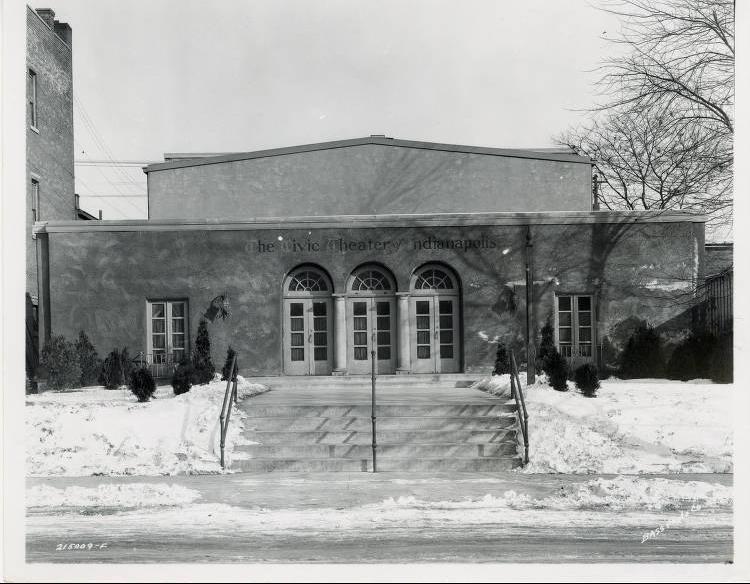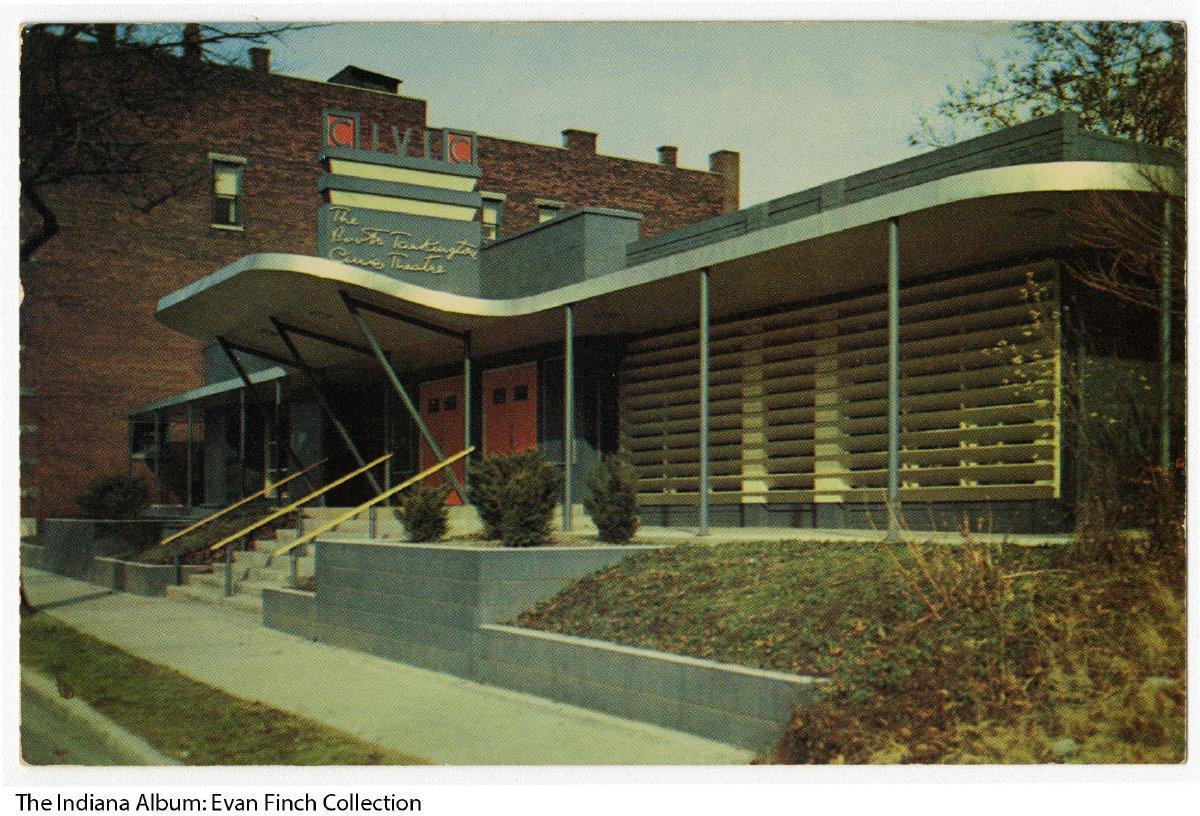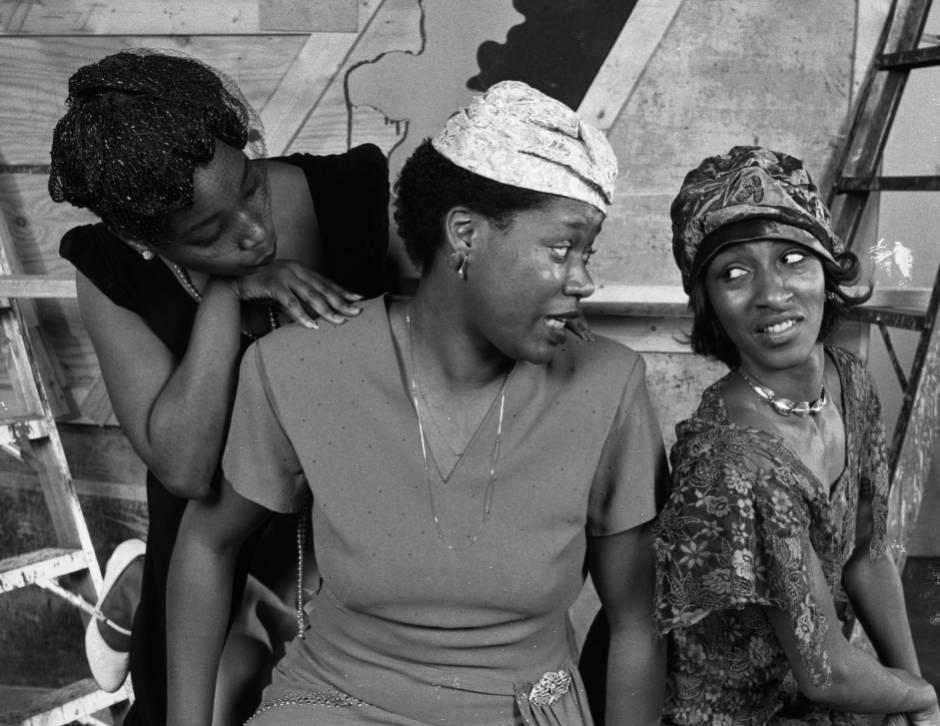The Booth Tarkington Civic Theatre is the largest and oldest community theater in the Indianapolis area and the longest continuously operating community theater in the U.S.

In 1914, Indianapolis playwright and several community leaders formed the Little Theatre Society of Indiana, a precursor to the Civic Theatre and the first volunteer-based theatre in the city. The little theater movement, which encouraged the formation of small volunteer-based acting companies, spread across the country in the years that preceded World War I. Parry brought the idea to Indianapolis after being a member of the Washington Square Players, an influential amateur theater group established in New York City in 1913. He served as interim chair and spokesman for the fledgling organization, and Artistic Director S. A. Elliot was then hired away from the Chicago Little Theatre to lead the new venture.
No auditoriums were available, so a sculpture court at the was pressed into service. The scenery had to be painted in a nearby barn and transported in hay wagons. On October 30, 1915, the Little Theatre made its debut with an evening of four short plays.

During its first two seasons, the society presented a total of 43 shows. As years passed, however, the art school proved inappropriate for stage productions, so in 1925 the Little Theatre built a new, 240-seat playhouse at Alabama and the streets (later known as Hedback Theatre). The new theater opened in February 1926 with a production of . In 1929, the company changed its name to Civic Theatre of Indianapolis.
The company established Jr. Civic to provide educational opportunities for children and youth in 1941. Education and community outreach have always been an integral part of Civic’s philosophy.
The occasional participation of a famous Hoosier author resulted in a name change in 1949-1950 to the Booth Tarkington Civic Theatre of Indianapolis. was an important advocate of the company in its early years, and the company had staged several of his plays. Yet the company continued to be called “Indianapolis Civic Theatre,” and then simply “Civic Theatre” or “Civic” became the common usage.
Civic was one of the few arts organizations that survived the Great Depression and two world wars. The theater flourished for nearly 50 years. By the 1960s, however, attendance was down. The board of directors felt that the Civic’s location had become undesirable, so a new, 645-seat theatre was built in 1973, through a generous gift from , on the grounds of the on West 38th Street.
The first season in the new complex, the Showalter Pavilion, was well received. This renewed interest, however, proved short-lived. Attendance declined again. By 1978, a complete restructuring was necessary to ensure the theatre’s survival. The operation became semi-professional. A board of directors was established to direct fiscal affairs. An executive director and an operations manager were hired to conduct day-to-day business. Full-time positions were created for box office, publicity, marketing, and development. An artistic director and two backstage technicians were hired. Designers, directors, musicians, and choreographers were contracted for each mainstage show, and an education director was hired to stimulate youth programming.
In the late 1970s and early 1980s, Civic instituted two new programs: , a “showcase” where local artists created experimental theatre; and , a group of adult actors who traveled to Indiana schools presenting educational plays about social issues. In its heyday, this latter program annually reached 110,000 schoolchildren.

At the Showalter, Civic Theatre continued to present large-scale, mainstream entertainment on its main stage. Annual attendance reached 50,000, and the annual student matinee series served over 5,000 Indiana students. Musicals, rarely produced in Civic’s early days, became the theatre’s most popular ticket item in the 1980s. To enhance the musical product, a hydraulic orchestra pit was constructed in 1991 funded by a capital campaign. The 20-year-old sound, light, and fly equipment were also renovated, and the entire facility was redecorated.
To make way for renovation and major construction, the Indianapolis Museum of Art did not renew Civic’s lease at the Showalter in 2004. Civic moved to the Marian University campus and opened its 2004-2005 season with a production of , after investing nearly $2 million in renovations to the Marian Hall Auditorium.
While the in was under construction, leaders of the Carmel Redevelopment Commission offered Civic a 100-year lease to lure it away from the Marian University Campus. Although the deal offered was attractive, the Civic board questioned how many regular patrons they might lose in a move away from Marion County.
In 2009, the board decided that the advantages of acquiring a permanent home outweighed any risks and reached an agreement to become the resident theater company when the Center for the Performing Arts was completed. Civic agreed to pay Carmel $10 million in the agreement. Indianapolis civic leaders viewed this move as a major blow to the city’s arts community.
After the deal was solidified, the 513-seat proscenium theater that would become Civic’s permanent home was officially named Booth Tarkington Civic Theatre. In addition to becoming the primary occupant of the Tarkington, Civic also was given access to a smaller 200-seat studio theater for more intimate performances. Although the company reported a loss of about 10 percent of its regular subscribers with the move, it subsequently grew its subscriber base before its September 2011 debut at the center.
At the Tarkington, Civic mainstage productions include musicals, comedies, and dramas. The company normally presents 90 performances and offers volunteer performers, craftsmen, and technicians, as well as members of its professional staff, opportunities to participate in onstage and behind-the-scenes theater experiences. Civic regularly offers workshops, classes, and educational performances for children, and it also provides programming for senior citizens.
FURTHER READING
- Civic Theatre. “About.” https://www.civictheatre.org/about.
CITE THIS ENTRY
APA:
Klass, M. (2021). Booth Tarkington Civic Theatre. Encyclopedia of Indianapolis. Retrieved Jan 6, 2026, from https://indyencyclopedia.org/booth-tarkington-civic-theatre/.
MLA:
Klass, Michael. “Booth Tarkington Civic Theatre.” Encyclopedia of Indianapolis, 2021, https://indyencyclopedia.org/booth-tarkington-civic-theatre/. Accessed 6 Jan 2026.
Chicago:
Klass, Michael. “Booth Tarkington Civic Theatre.” Encyclopedia of Indianapolis, 2021. Accessed Jan 6, 2026. https://indyencyclopedia.org/booth-tarkington-civic-theatre/.

Help improve this entry
Contribute information, offer corrections, suggest images.
You can also recommend new entries related to this topic.